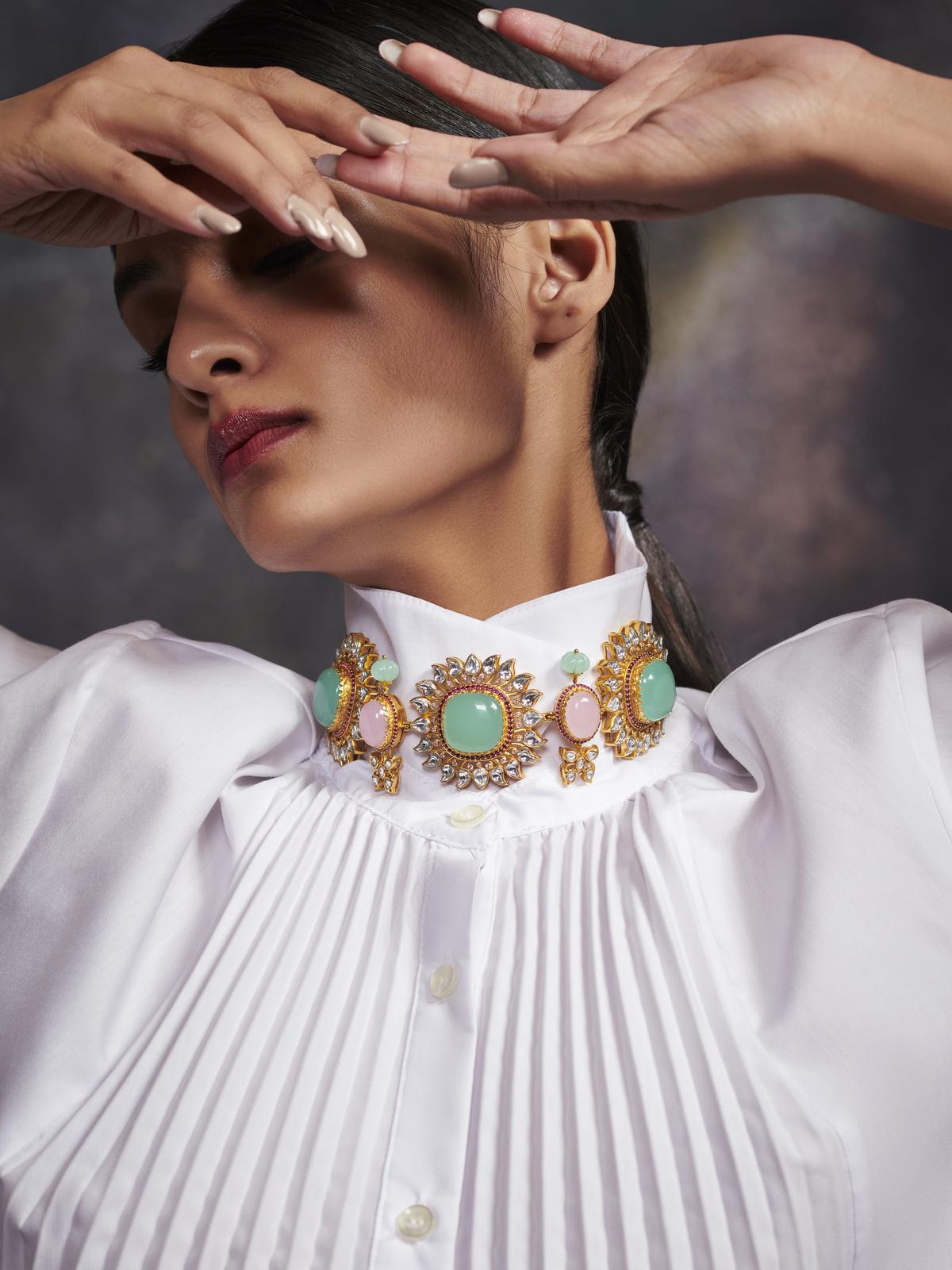Conscious jewellery label Aulerth is breaking new ground in making designer accessories out of reclaimed industrial waste and man-made gemstones
Conscious jewellery label Aulerth is breaking new ground in making designer accessories out of reclaimed industrial waste and man-made gemstones
The desire to do something good can be the bedrock of a business. Vivek Ramabhadran’s new jewellery label, Aulerth, is trying to be one such idea. The brand uses metals reclaimed from industrial waste as raw material, then pairs it with man-made gemstones sourced from Jaipur and Thailand, getting well-known designers to create collections.
The idea for Aulerth developed over many months last year, beginning life as “something to do with sustainable food and then emerging as an accessories brand with the best Indian designers getting involved”, says Vivek, in an interview at his light-filled office in Gurugram. This is his first entrepreneurial venture, and he was previously associated with Swarovski as vice president for South and Southeast Asia, handling its crystals business across India, the Middle East, and Southeast Asia. Apart from this, he was also the lead on a collaborative project called Confluence, where he roped in designer labels, including the ones named above, to design jewellery featuring Swarovski crystals.
Courting the world
Beginning as a thought in January 2020, Aulerth developed over the period of the pandemic and culminated in a formal vision document by May-June 2021. “The main points were that it would involve Indian designers and that the output would be products that answer the question why designs made with sustainable materials don’t have a demand,” he says. On the brand website — currently just over two months old — on sale across the world are the first three collections designed by JJV by JJ Valaya, Suneet Varma, and Tribe by Amrapali.

JJV by JJ Valaya’s collection plays on geometry, mixed with the designer’s love for the Baroque, ending up with vintage-inspired pieces that are modern, multi-functional, and opulent. Suneet Varma’s designs, on the other hand, take a more traditional route, with faux polki creating the softer sheen of traditional Indian stones set in Mughal-inspired designs. From Tribe by Amrapali, we see a bold vocabulary that mixes polki-cut stones, enamel, as well as oversized, man-made gemstones of various hues coming together in a definite Durbar aesthetic.
Returns are welcome
The great thing about these pieces is that once you buy them, you aren’t stuck with them. Aulerth allows you to return jewellery after 12 months, with up to 40%-60% of the original value as credit to be used in the purchase of a new design. This way, not only do older designs get another lease of life, even the materials used to make them can also be recycled to create newer designs. “About 50 years ago, gold made a lot of sense as there weren’t any real avenues for investment,” says Vivek. But today, with so many better ways to invest your money, the Indian consumer is aware that buying gold jewellery is no longer a way to ensuring their wealth flow. “Besides, if Neha [Vivek’s wife] is not interested in traditional jewellery, why would our daughters want the same?” he laughs.

Behind this thinking, though, is a firm belief that consumers value products that are more connected to the environment, more design led and carry a story. “It’s a $60 billion market globally, the second largest in the world. And the truth is that Indians are crazy about well-designed and beautiful jewellery,” he says.
Within this round figure, 90% of which is occupied by gold, the remaining 10% is what Vivek aims at working in an expanding, in due time. “The other dimension that I’m deeply fascinated with is conscious consumerism and sustainability,” both of which he has tried to address in the way Aulerth designs and produces its products, as well as the life cycle of those products after they are bought.

In a world struggling with processes that begin polluting even before an actual product becomes possible — deforestation, altering the environment, cruelty towards animals, and overproduction, just to name a few — what Vivek has imagined could be a solid solution if it becomes a success. “Our metal currently comes from recycling plants in Mumbai, where it is smelted and repurposed and made fit for our use, and then made into jewellery in Jaipur and Thailand,” he says.
With the label in its third month, he wants to give it the time to develop into the resolution it can become in the months and years to come. Can jewellery inspire change? Vivek says, “With local and even global designers leading the creative vision, and a solid production and marketing back-end holding the reigns for the label’s activities and expansion, why not?
























